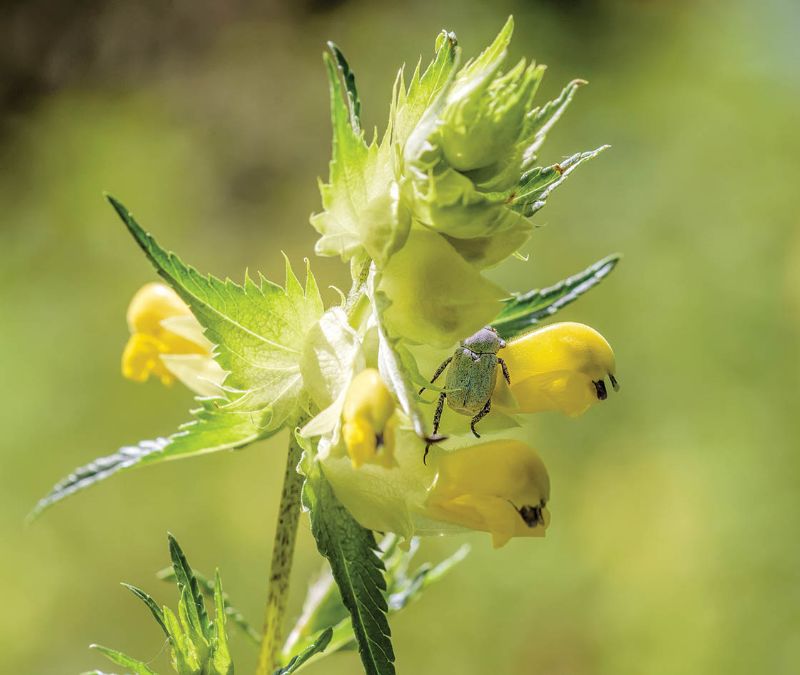- Home
- News, Articles & Reviews
We are hiring! Please click here to join our growing magazine delivery team in Gloucestershire!
Areas
Pets & Wildlife
Archive

English meadows
All Areas > Pets & Wildlife > Wildlife Matters
Author: Dorothy Glen, Posted: Thursday, 28th July 2022, 09:00
Exploring a meadow on a summer’s day is a joy. They are one of our most biodiverse habitats, with bees, butterflies, mice, voles, snakes, hares, birds and many more creatures making them their homes.
But before the explosion of life that makes up this thriving ecosystem, a quiet battle first takes place.
Up to 45 species of plants in a square metre
Traditionally, meadows grew up in managed fields where grass was left to grow long for the hay harvest. But rather than being just grass, meadows can hold up to 45 species of plants in a square metre.
One of those plants is yellow rattle, named for its seeds, which rattle in their papery pouches when dry. Yellow rattle is a semi-parasitic plant. It photosynthesises to make sugar, but it takes water and nutrients from grasses by tapping into their roots. In doing this, vigorous grasses are suppressed, allowing the yellow rattle to thrive and many other meadow plants to find space to grow where otherwise the grasses would dominate.
Yellow rattle was once considered an indicator of poor grassland by farmers, and the hay fields have been chemically treated over many years, gradually destroying their biodiversity. In fact, 97% of English meadows have been lost since WWII, with only 3% remaining today.
There is now pressure to protect and maintain our remaining meadows, and restore hay meadows. Yellow rattle is used in the restoration process, as re-introducing it helps to allow our wildflower species space amongst the grass.
Grasses give meadows their wispy structure
If you’ve ever tried to grow a patch of meadow in your garden and struggled, it may be that yellow rattle and a grass mix would help. Throwing down some wildflower seeds can lead to pretty flowers but a messy, straggly patch. Grasses give meadows their wispy structure and beauty alongside the flowers.
Furthermore, although flowers are important for pollinators, the grasses themselves are larval food plants for many of them. We don’t have butterflies without caterpillars, so the grass can be of great benefit.
Management will allow a habitat to thrive
It’s also important to manage the area – cut it back in late summer before the grass takes over, to allow plants to first seed and then have space to regrow the following year. It is a bit of a myth that nature does best when left alone – thoughtful management will maintain a habitat and allow it to thrive.
So mow, prune, cut back (and remove the cuttings), but wait until August for best results.Other Images
Copyright © 2025 The Local Answer Limited.
Unauthorized use and/or duplication of this material without express and written permission from this site's author and/or owner is strictly prohibited. Excerpts and links may be used, provided that full and clear credit is given to The Local Answer Limited and thelocalanswer.co.uk with appropriate and specific direction to the original content.More articles you may be interested in...


© 2025 The Local Answer Limited - Registered in England and Wales - Company No. 06929408
Unit H, Churchill Industrial Estate, Churchill Road, Leckhampton, Cheltenham, GL53 7EG - VAT Registration No. 975613000You are leaving the TLA website...
You are now leaving the TLA website and are going to a website that is not operated by us. The Local Answer are not responsible for the content or availability of linked sites, and cannot accept liability if the linked site has been compromised and contains unsuitable images or other content. If you wish to proceed, please click the "Continue" button below:




